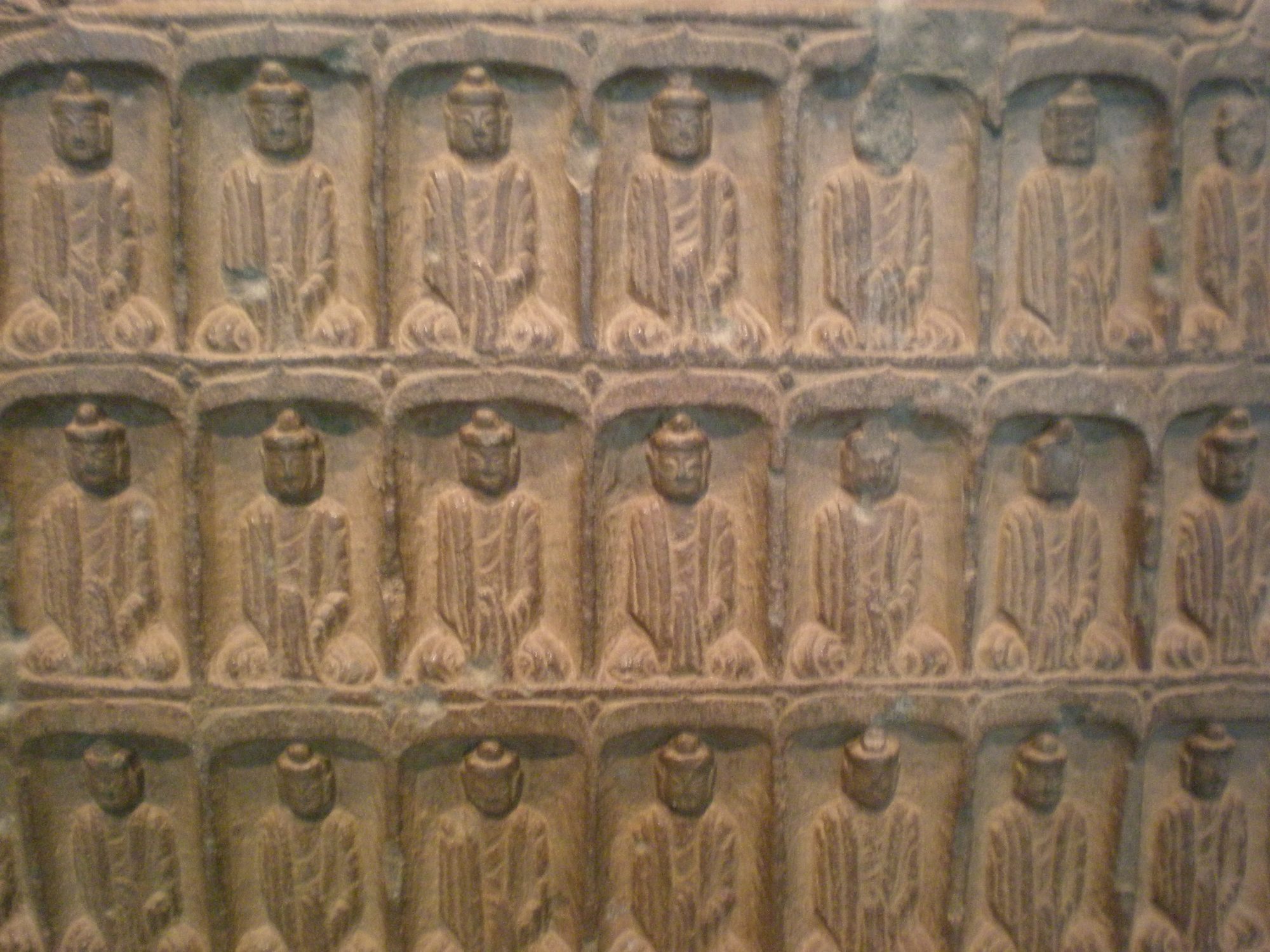I recently returned from a long weekend in my beloved Normandy, my home away from home. A much needed break, and one that carried a sense of threshold, one of emergence – for nature, and for me. Spring is enticing me out into the world once more. As well as a heart space and retreat destination, Normandy is where I first put pen to paper for my book project some three years ago. And so it felt a wonderful invitation from my meditation (and now writing) mentor to sit down together and go through the first draft of my manuscript whilst there. I have been working with Crystal as my “MI” (meditation instructor) for nearly 10 years now. She has been a trusted companion as I have traversed the three yanas of the Buddhist path; a ‘spiritual friend’ or kalyanamitra in the Buddhist teachings. A writer and editor herself, Crystal was an obvious choice to be the first reviewer of my work, and I was delighted she accepted: I, and my book, felt in safe hands.
One question Crystal has left me to ponder is “who is the book for?”. When I set out on my writing journey, my intention was to share my experience of bringing the Buddhist dharma and practices into Western psychotherapeutic working. I trained in a Western model, yet as my Buddhist path deepened, separating my work and my personal path became more and more artificial. But that left me with a dilemma – do the underpinnings of Buddhistic and Humanistic psychology and philosophy fit? Deep consideration of their compatibility was important to me. The book was my attempt to write myself a ‘manual’ of practice; and it occurred to me that it might also be valuable to share with others. My first draft therefore was for therapists like me – those who were trained (or are training) in a Western model but have a practice of meditation and / or interest in what else Buddhism might offer. On reading my book, Crystal invited me to consider a wider target – that maybe this book might benefit anyone interested in suffering and its alleviation through psychological and spiritual practices. Upon which bookshelf would this book reside in book shops?
I have mentioned a few times on this blog the importance I have come to place on the dynamic balance between the masculine and feminine energies. This had been true in my writing – I didn’t want the book to come across as a “how to do”, but rather an invitation to the reader to consider “how they might” tread and create their own path through this territory. Crystal made a suggestion I loved -to transform the manuscript from textbook to one with the quality of kalyanamitra or spiritual friend for the reader. And so this is a current contemplation.
 If Helen is the ‘red thread’ through this tale, how have my therapeutic experiences (as client, as therapist), my role as educator, and practice as Buddhist weaved around to shape my understanding and knowing of mind? Or, as I have recently pondered, how has my doing taken me through a journey of becoming toward being?
If Helen is the ‘red thread’ through this tale, how have my therapeutic experiences (as client, as therapist), my role as educator, and practice as Buddhist weaved around to shape my understanding and knowing of mind? Or, as I have recently pondered, how has my doing taken me through a journey of becoming toward being?
This is both an exciting and challenging proposition. In broadening the scope of this book I am being enticed to reveal a less used voice. In the past I have endeavoured to become an authority in my chosen field, and so now to allow my experiences rather than my knowledge to lead truly brings me to practicing a feminine life, or one might say a heuristic enquiry. In writing my first draft, I had relied on my academic voice and styling: critical thinking, citing the work of others to justify a view, consistent structuring of chapters, sub-sections and cross references. Crystal observed that writing from the professional view had given the manuscript a healthy skeleton; the invitation now was to make the writing fleshier!
So, what is it to write as kalyanamitra? Maybe first we can re-cap what spiritual friendship is, and is not; I have documented some of this elsewhere on my website as it relates to my offering of spiritual and psychological integration. In addition to its nature as peer-to-peer rather than teacher-to-student, we might give thought to how this type of activity sits within what it is to be a bodhisattva, or a spiritual warrior.
If being a bodhisattva is the aspiration to attain liberation from mental and emotional anguish for every single person on this planet, kalyanamitra might be thought of as the skilful means through which this may manifest.
In the Vajrayana Buddhist teachings, this fits into the model of the three kayas: Bodhisattvas appear in the realm of the sambhogakaya, a dimension of energy beyond space and time. I suggest kalyanamitra may belong to the nirmanakaya because this is the dimension of ceaseless manifestation. Let me translate this into non-Vajrayana language – the Vow to become a bodhisattva is an aspiration, an ideal; the bodhisattva is one’s potential for limitless being. To offer oneself as kalayanamitra to another practitioner is to put this ideal into practice. It is only in the nirmanakaya dimension of our being that we can come into direct relationship with an Other. The kalyanamitra and practitioner relationship is one of intimacy.
 Being a bodhisattva (since taking the vow in 2019), it is my aspiration to help others. I am fortunate that my work as a therapist speaks directly to this aspiration. In becoming a kalyanamitra I move alongside my clients into intimate relationship. To write a book as kalyanamitra therefore is to move from the professional ‘outside’ position into relationship with the theme itself. I am a big fan of psychotherapist Sheldon Kopp, and his notion of ‘fellow-pilgrim’ comes to mind here. And, as I make mention of Kopp, it reminds me how often I have found companionship in writers and their texts. I bring to mind the books that have had the most profound impact upon me – without exception they have not been merely thought provoking but also conveyed a sense of the author’s being. Often, the book has become the door through which I have gone to meet and work with the author: John Welwood, Ruella Frank, Matt Licata, Sandra Maitri, and Judith Blackstone to name a few. Their books occupy my bookshelves; the books are friends in their own right; each being there for me during the ‘dark night of the soul’. Pema Chodron writes about the importance of such support
Being a bodhisattva (since taking the vow in 2019), it is my aspiration to help others. I am fortunate that my work as a therapist speaks directly to this aspiration. In becoming a kalyanamitra I move alongside my clients into intimate relationship. To write a book as kalyanamitra therefore is to move from the professional ‘outside’ position into relationship with the theme itself. I am a big fan of psychotherapist Sheldon Kopp, and his notion of ‘fellow-pilgrim’ comes to mind here. And, as I make mention of Kopp, it reminds me how often I have found companionship in writers and their texts. I bring to mind the books that have had the most profound impact upon me – without exception they have not been merely thought provoking but also conveyed a sense of the author’s being. Often, the book has become the door through which I have gone to meet and work with the author: John Welwood, Ruella Frank, Matt Licata, Sandra Maitri, and Judith Blackstone to name a few. Their books occupy my bookshelves; the books are friends in their own right; each being there for me during the ‘dark night of the soul’. Pema Chodron writes about the importance of such support
“The support that we give each other as practitioners is not the usual kind of samsaric support in which we all join the same team and complain about someone else. It’s more that you’re on your own, completely alone, but it’s helpful to know that there are forty other people who are also going through this all by themselves.”
 Working with our suffering can feel a lonely task. The way in which these teachers have written has encouraged me to step outside the therapist-as-expert mode and to become a fellow pilgrim. “I too know suffering; and from that experience I can help you come to recognise your own, and be alongside as you do so”.
Working with our suffering can feel a lonely task. The way in which these teachers have written has encouraged me to step outside the therapist-as-expert mode and to become a fellow pilgrim. “I too know suffering; and from that experience I can help you come to recognise your own, and be alongside as you do so”.
The kalayanamitra can’t take away the pain, nor do the work for you, but just their presence communicates how they have trodden (and continue along) a similar path…and survived! The kalyanamitra alongside offers com-passion (suffering-with) and com-panionship (breaking bread with). To conceive that one day my book might reside on someone’s bookshelf and offer support, encouragement, and even comfort during a ‘dark night’ moves and inspires…and I will need that as I look to address all the feedback and ideas Crystal has offered. It is my hope to finish this book in 2022…maybe more trips to Normandy will help!

